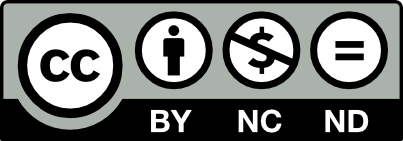Please use this identifier to cite or link to this item:
http://hdl.handle.net/10609/78026
| Title: | Combining distributed queuing with energy harvesting to enable perpetual distributed data collection applications |
| Author: | Vázquez Gallego, Francisco Tuset-Peiro, Pere ALONSO-ZARATE, JESUS ALONSO-ZARATE, JESUS |
| Others: | Centre Tecnològic de Telecomunicacions de Catalunya Universitat Oberta de Catalunya (UOC) Universitat Politècnica de Catalunya (UPC) |
| Citation: | Vázquez Gallego, F., Tuset Peiró, P., Alonso, L. & Alonso Zarate, J. (2018). Combining distributed queuing with energy harvesting to enable perpetual distributed data collection applications. Transactions on Emerging Telecommunications Technologies, 29(7), 1-19. doi: 10.1002/ett.3195 |
| Abstract: | This paper presents, models and evaluates EH-DQ (Energy Harvesting-aware Distributed Queuing), a novel MAC protocol that combines Distributed Queuing (DQ) with Energy Harvesting (EH) to address data collection applications in industrial scenarios using long-range and low-power wireless communication technologies. We model the MAC protocol operation using a Markov chain and evaluate its ability to successfully transmit data without depleting the energy stored at the enddevices. In particular, we compare the performance and energy consumption of EH-DQ with that of TDMA (Time Division Multiple Access), which provides an upper limit in terms of data delivery, and EH-RDFSA (EH-aware Reservation Dynamic Frame Slotted-ALOHA), which is an improved variation of FSA (Frame Slotted ALOHA). To evaluate the performance of these protocols we use two performance metrics: the delivery ratio and the time efficiency. The delivery ratio measures the ability to successfully transmit data without depleting the energy reserves, whereas the time efficiency measures the amount of data that can be transmitted in a certain amount of time. Results show that EH-DQ and TDMA perform close to the optimum in terms of data delivery, and both outperform EH-RDFSA in terms of data delivery and time efficiency. Compared to TDMA, the time efficiency of EH-DQ is insensitive to the amount of harvested energy, making it more suitable for energy-constrained applications. Moreover, compared to TDMA, EH-DQ does not require updated network information to maintain a collision-free schedule, making it suitable for very dynamic networks. |
| Keywords: | energy harvesting EH-DQ access protocol |
| DOI: | 10.1002/ett.3195 |
| Document type: | info:eu-repo/semantics/article |
| Version: | info:eu-repo/semantics/submittedVersion |
| Issue Date: | 16-Mar-2017 |
| Publication license: | http://creativecommons.org/licenses/by-nc-nd/3.0/es/  |
| Appears in Collections: | Articles cientÍfics Articles |
Files in This Item:
| File | Description | Size | Format | |
|---|---|---|---|---|
| ett3195-preprint.pdf | 580,25 kB | Adobe PDF |  View/Open |
Share:
 Google Scholar
Google Scholar
 Microsoft Academic
Microsoft Academic
This item is licensed under a Creative Commons License


